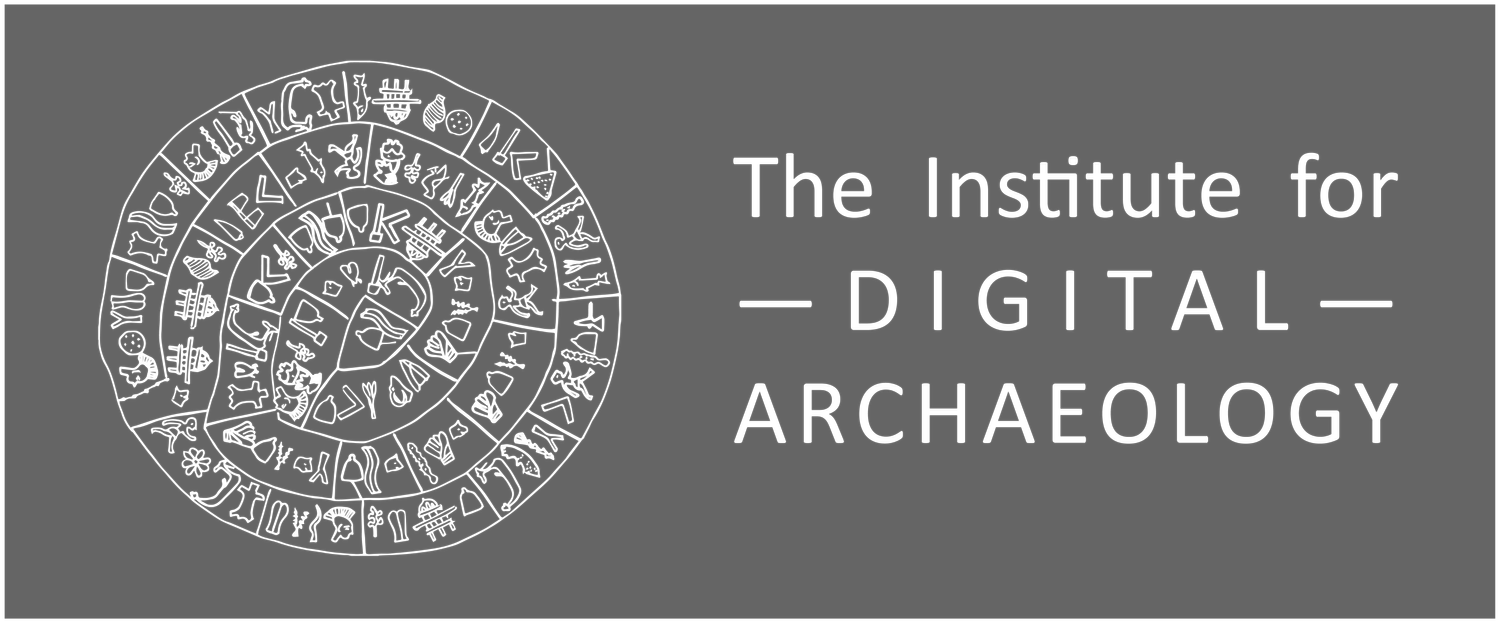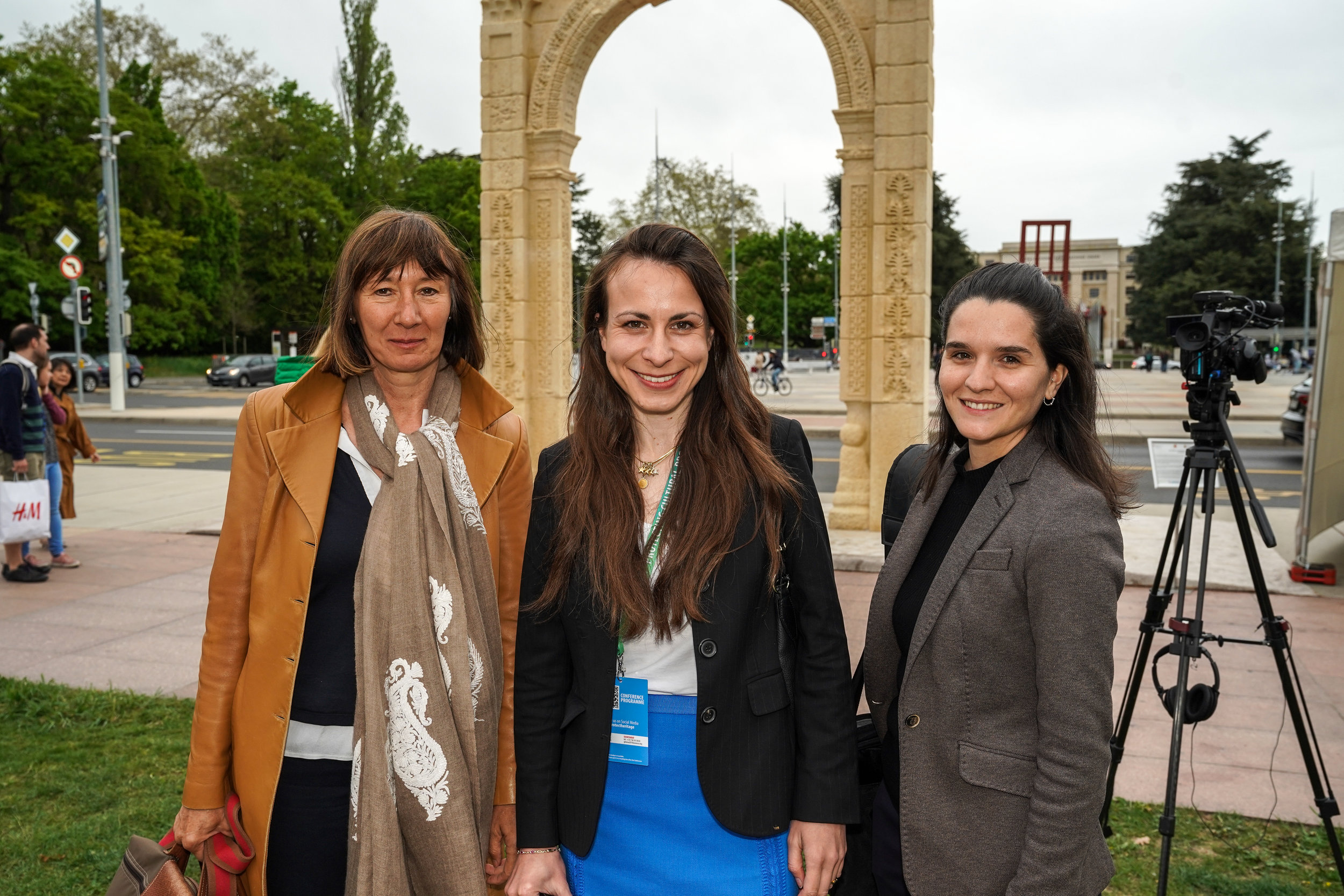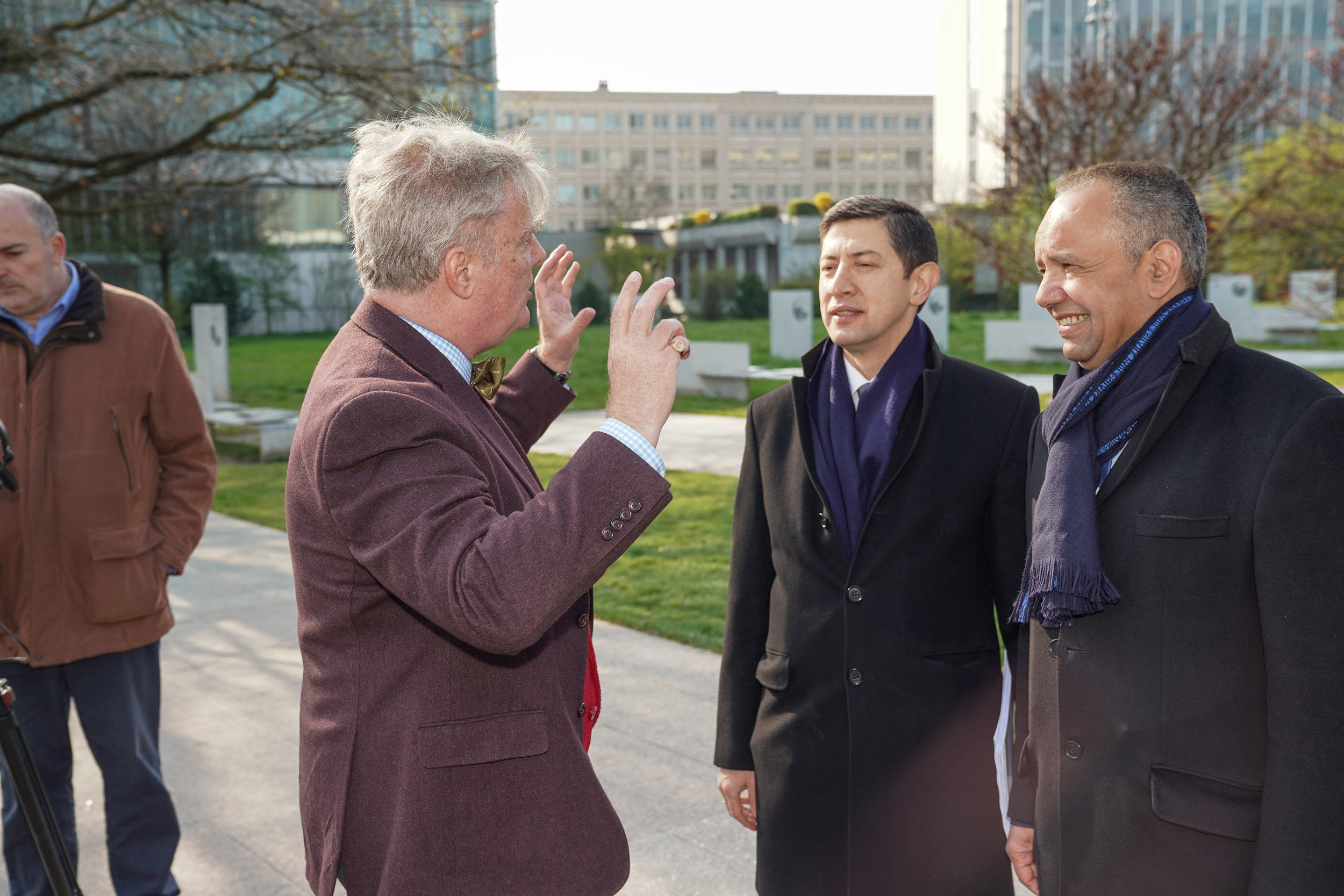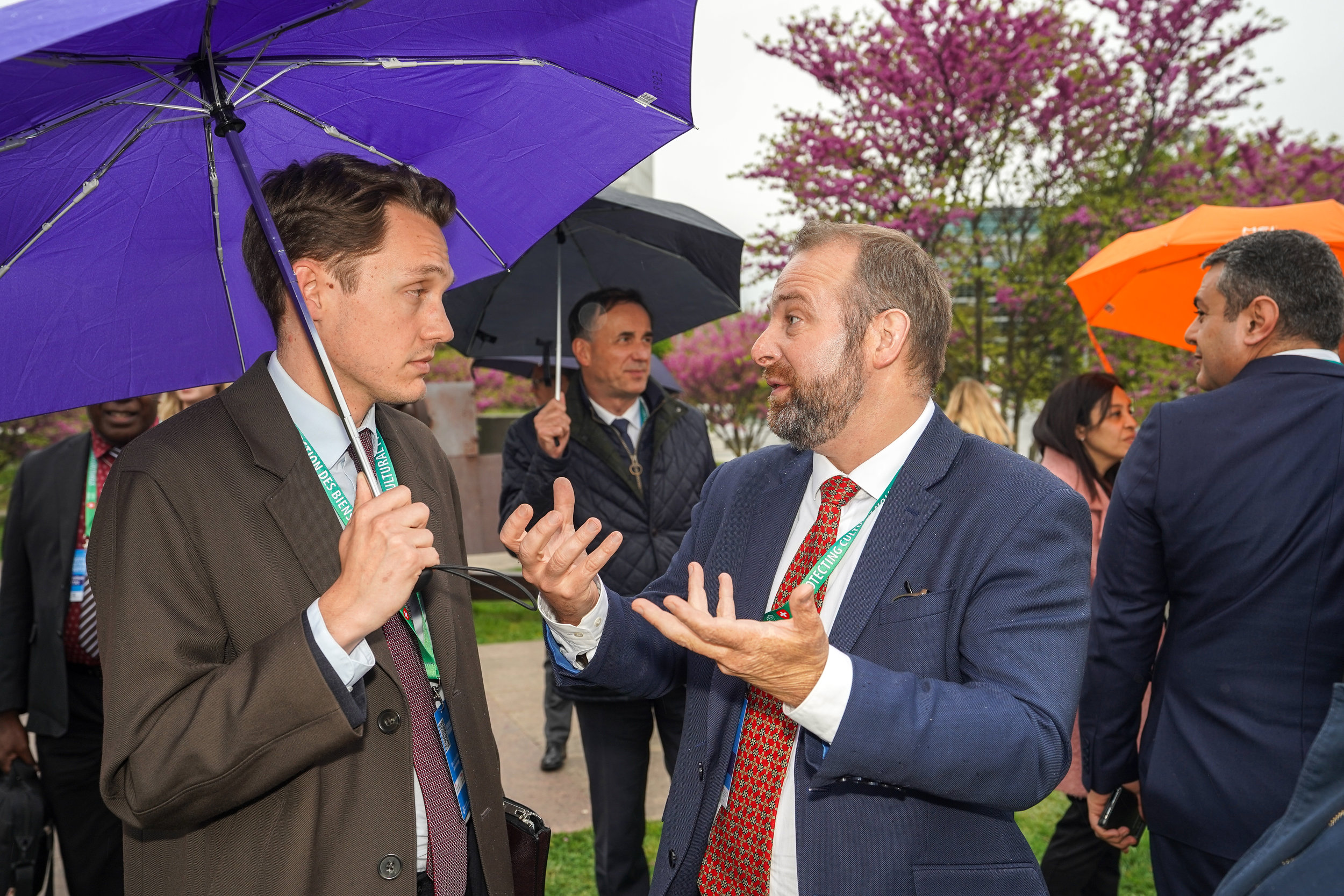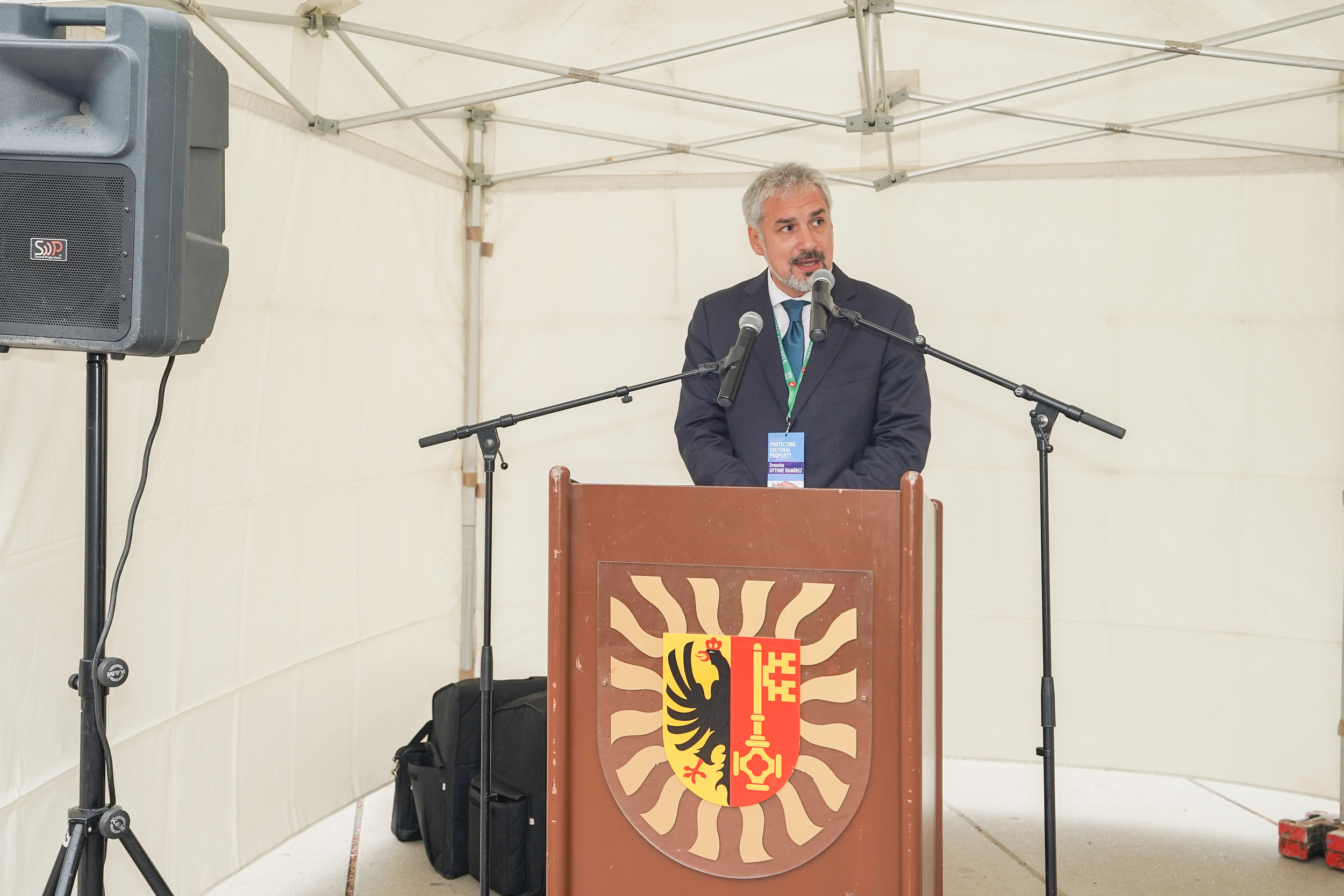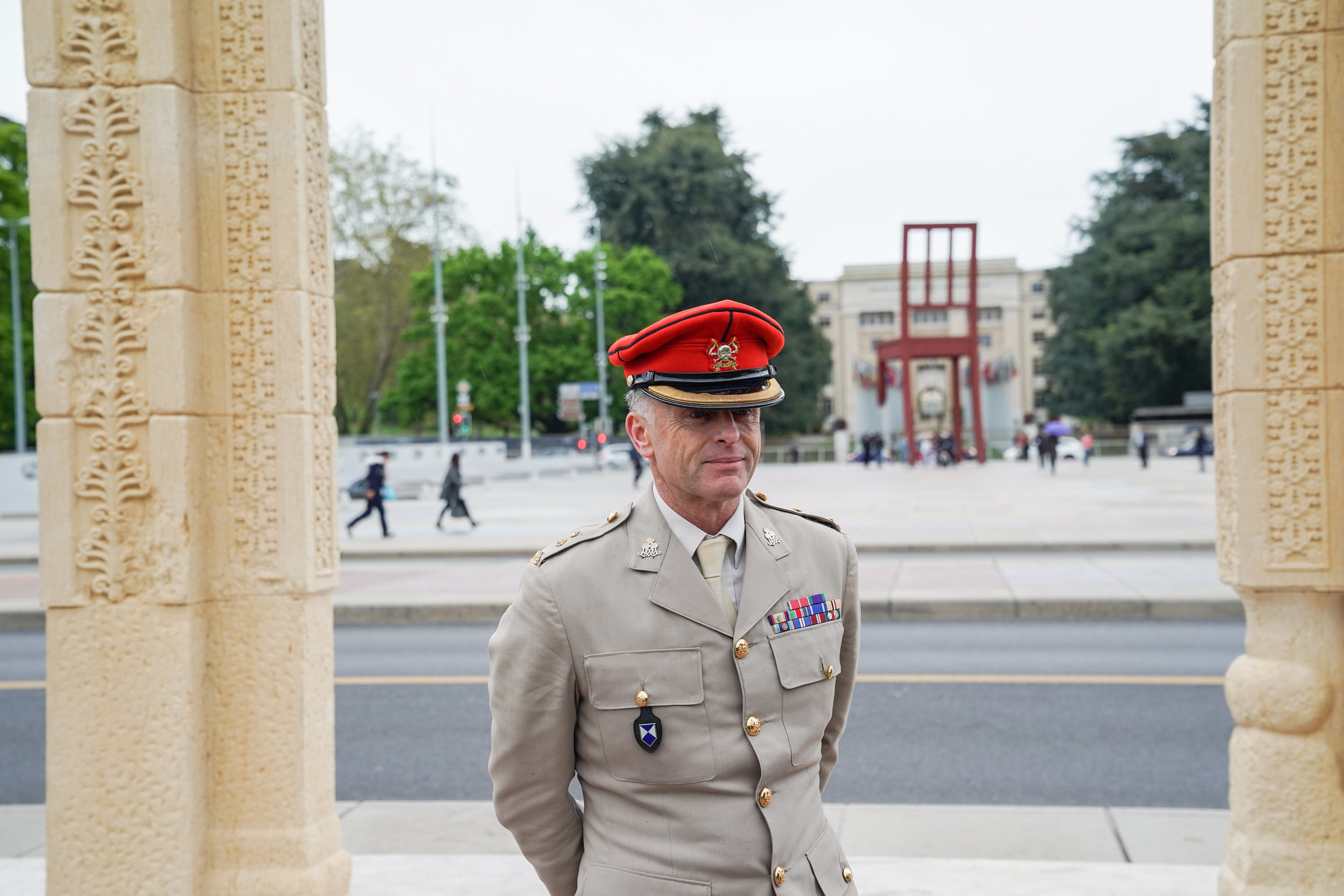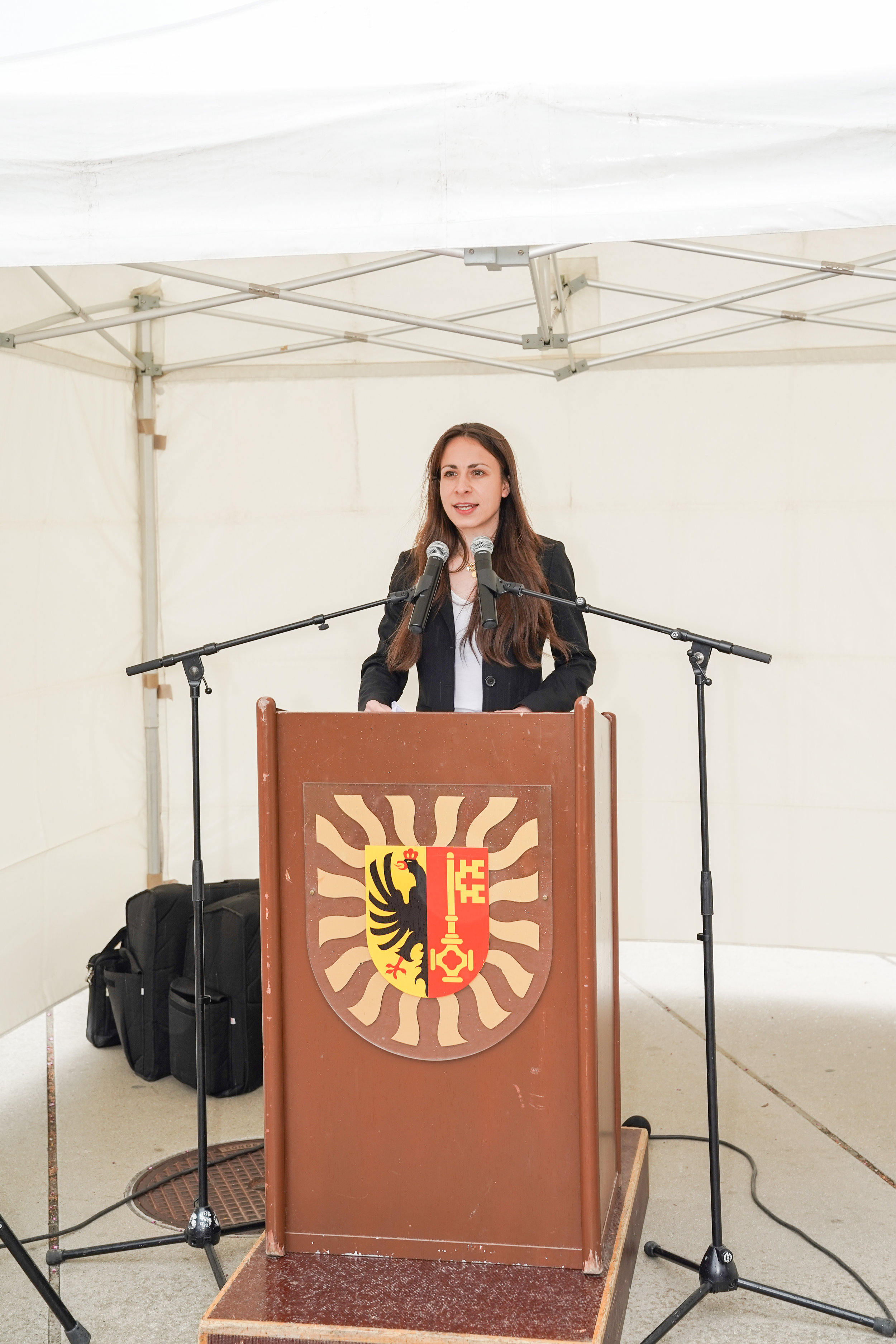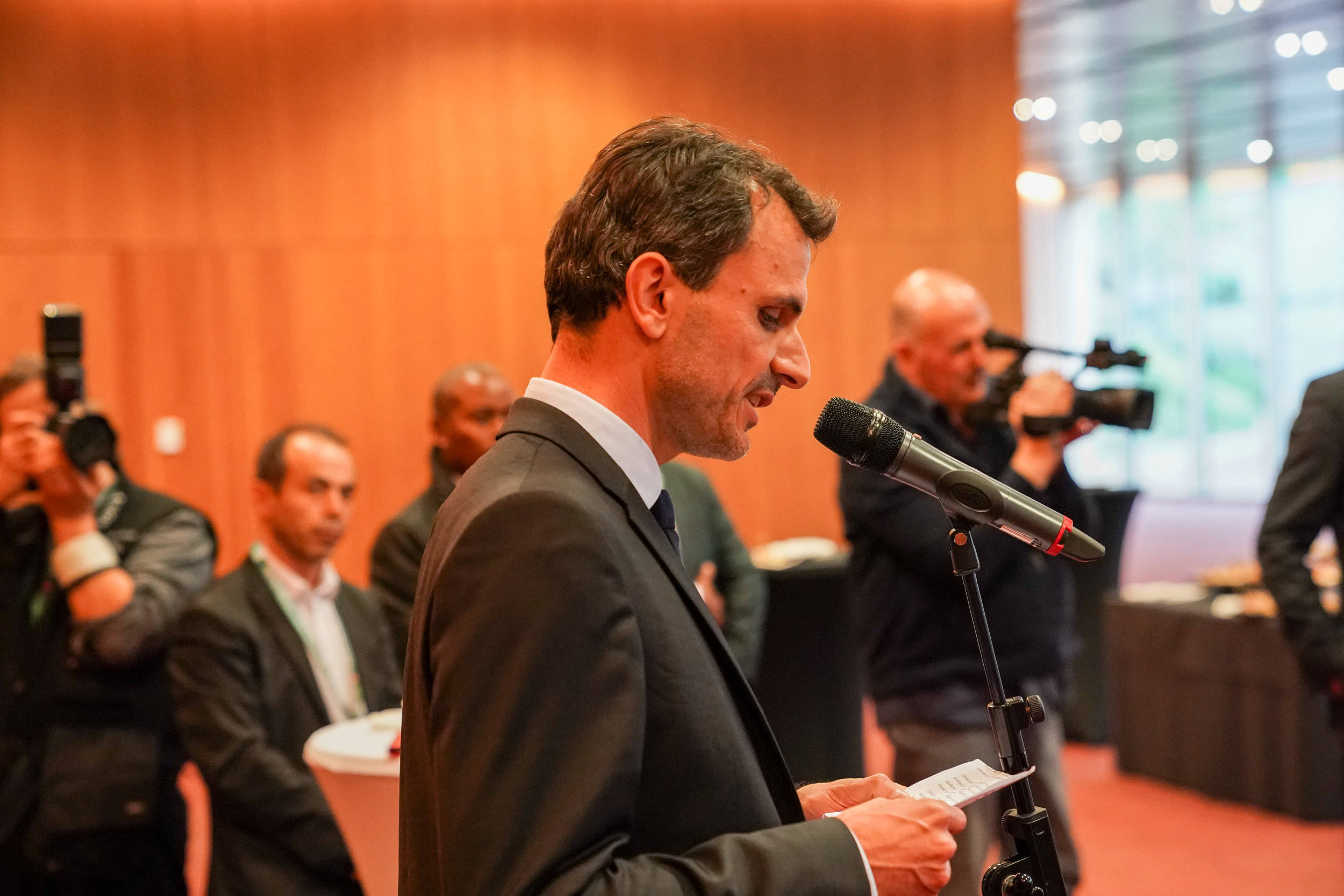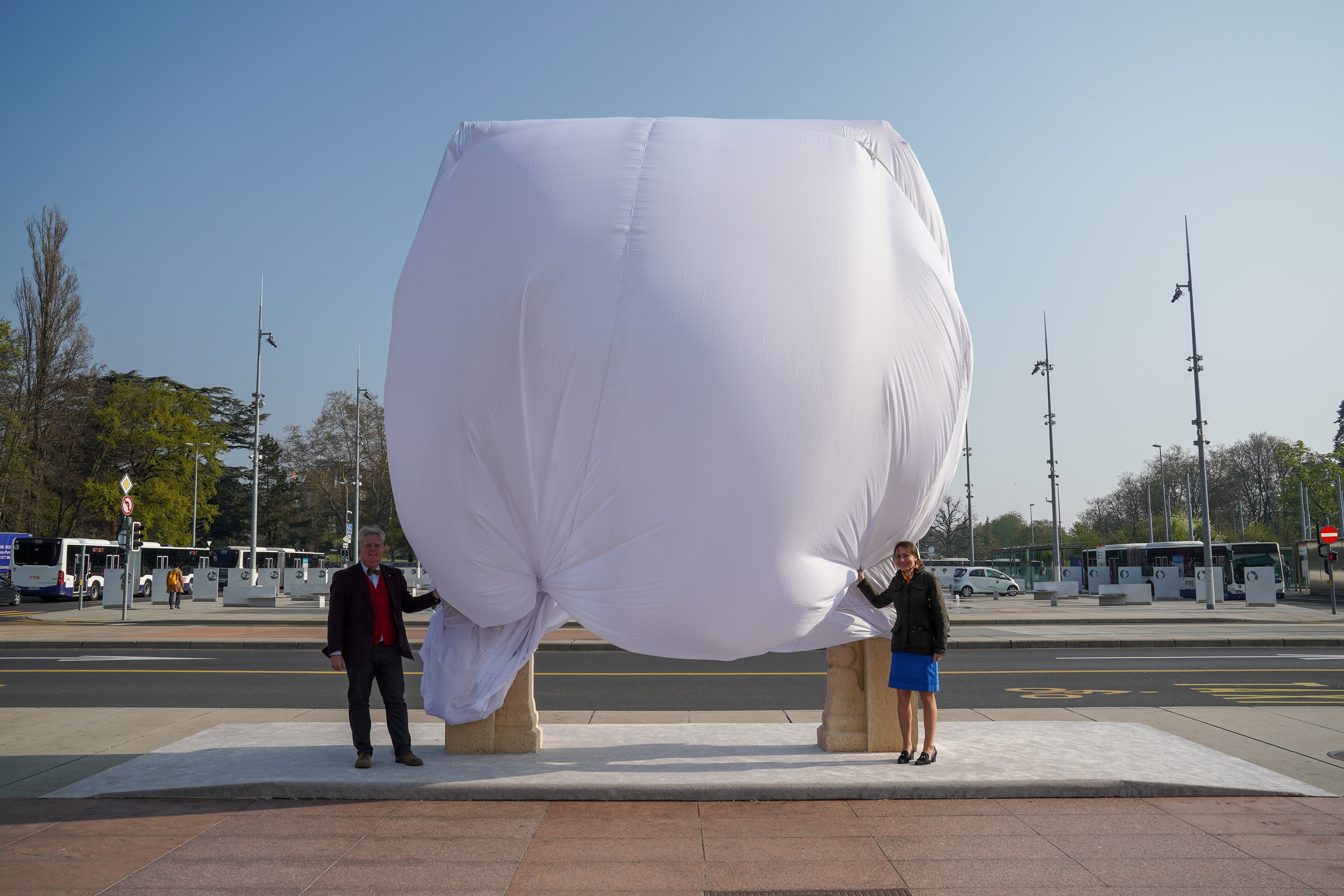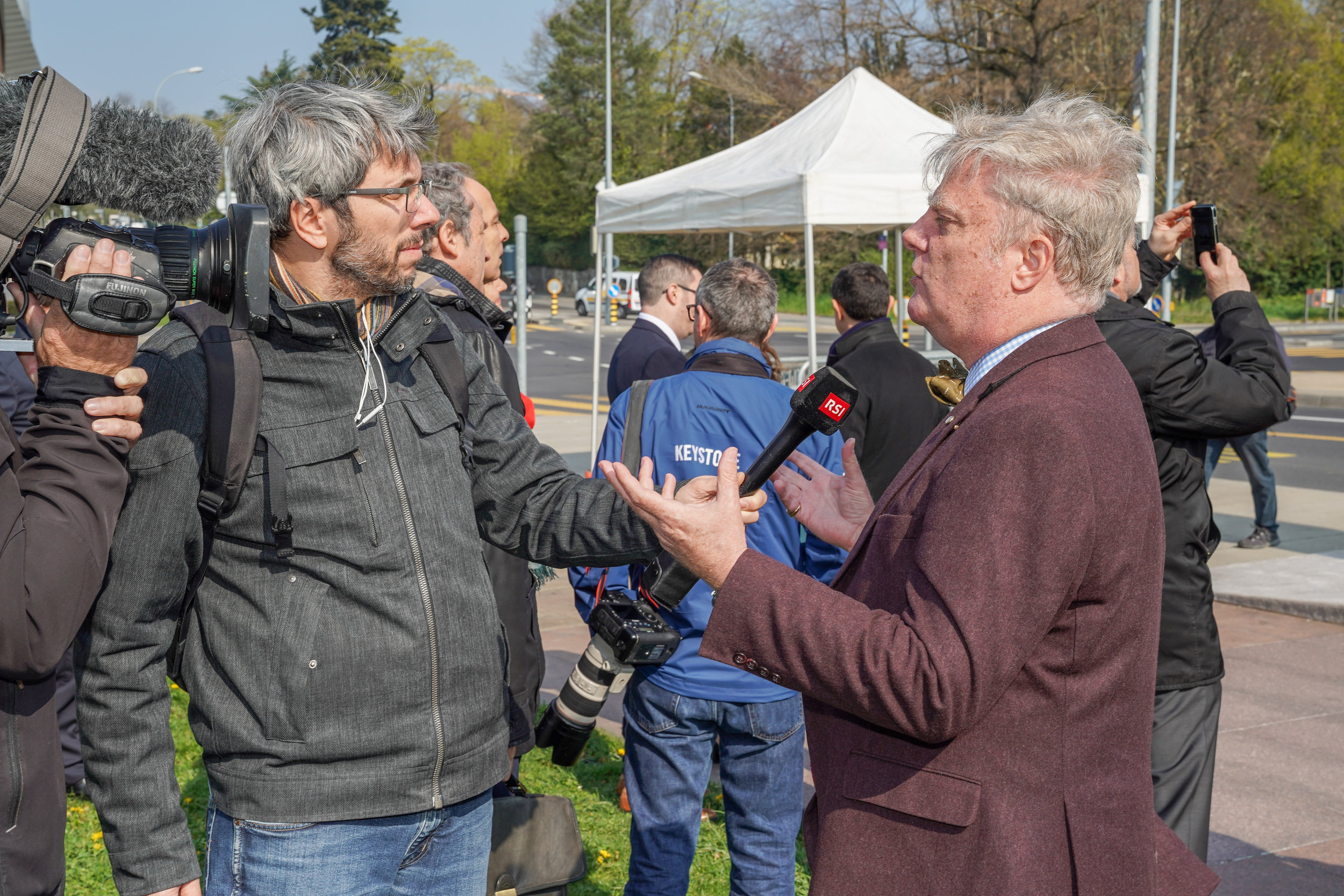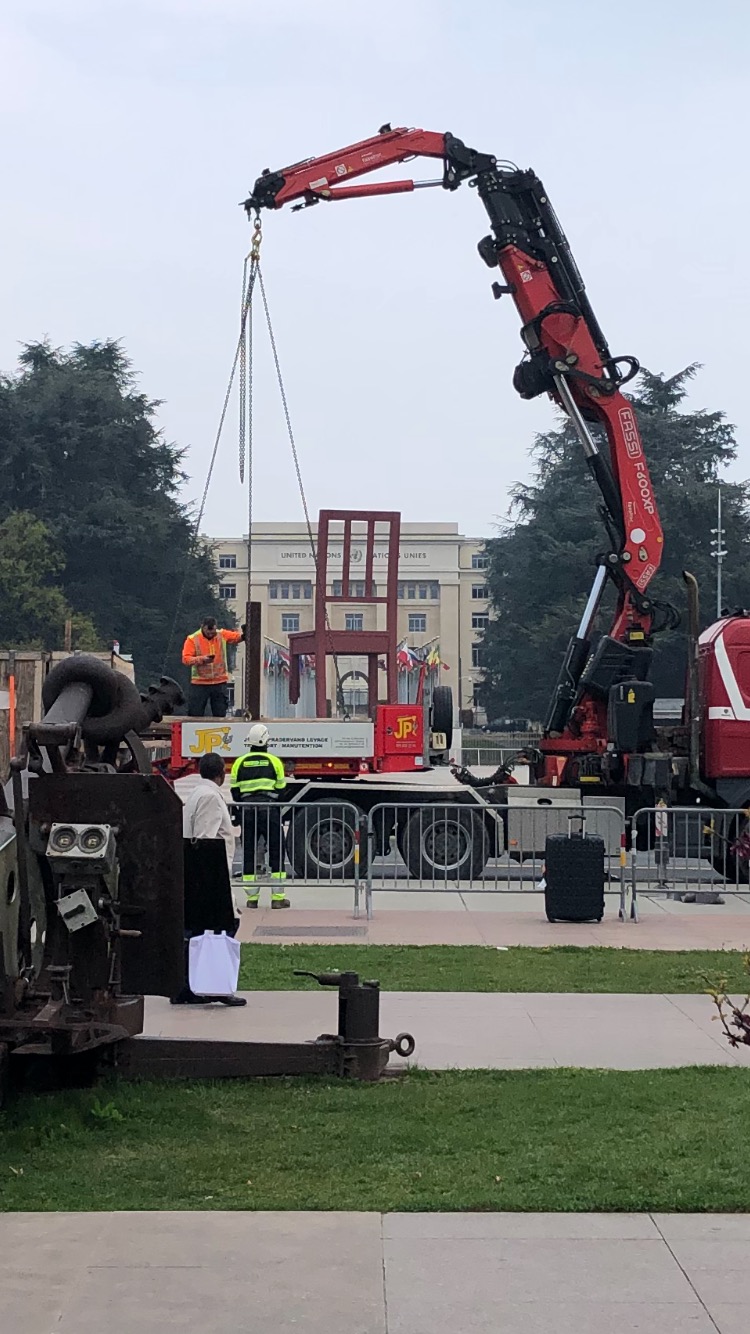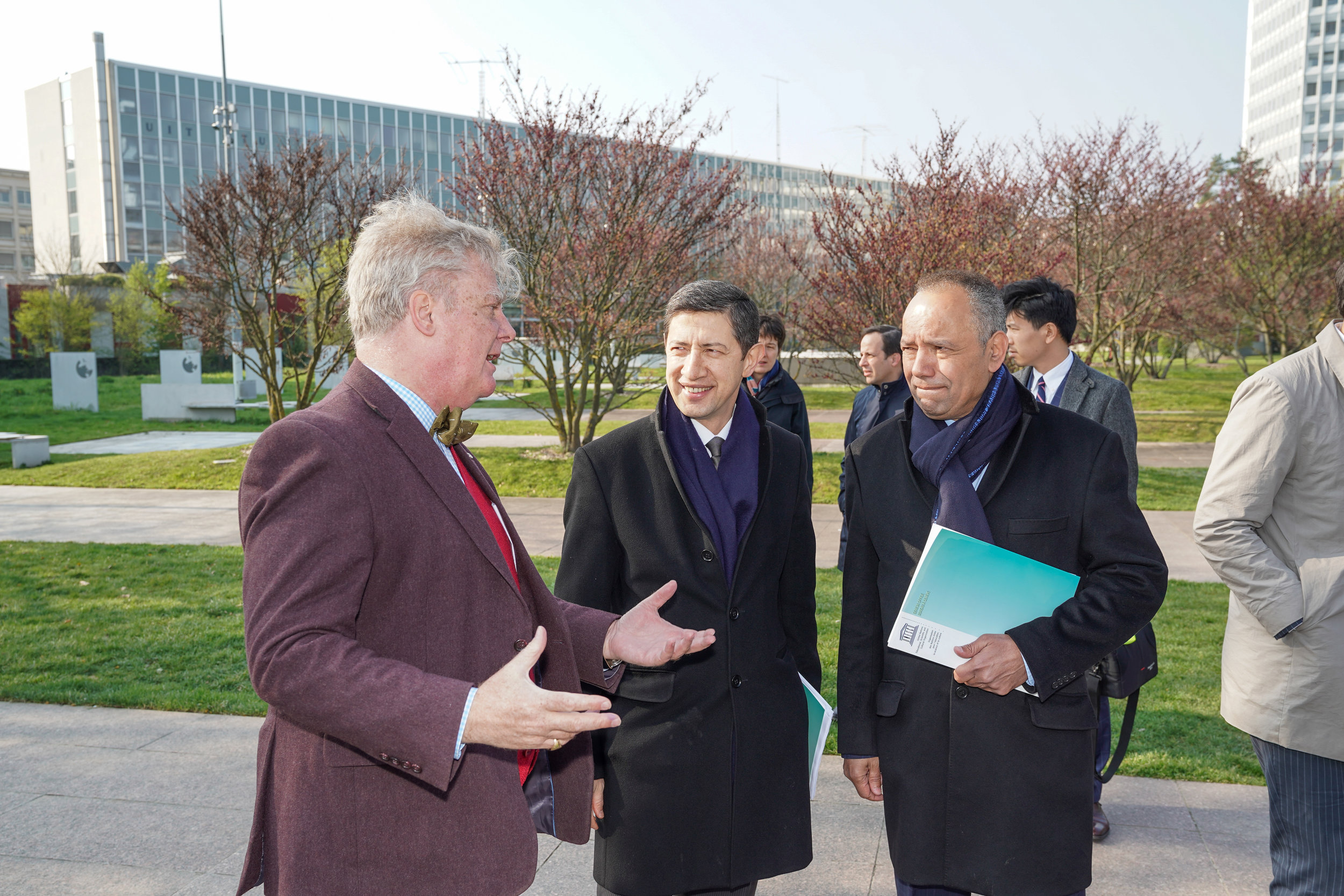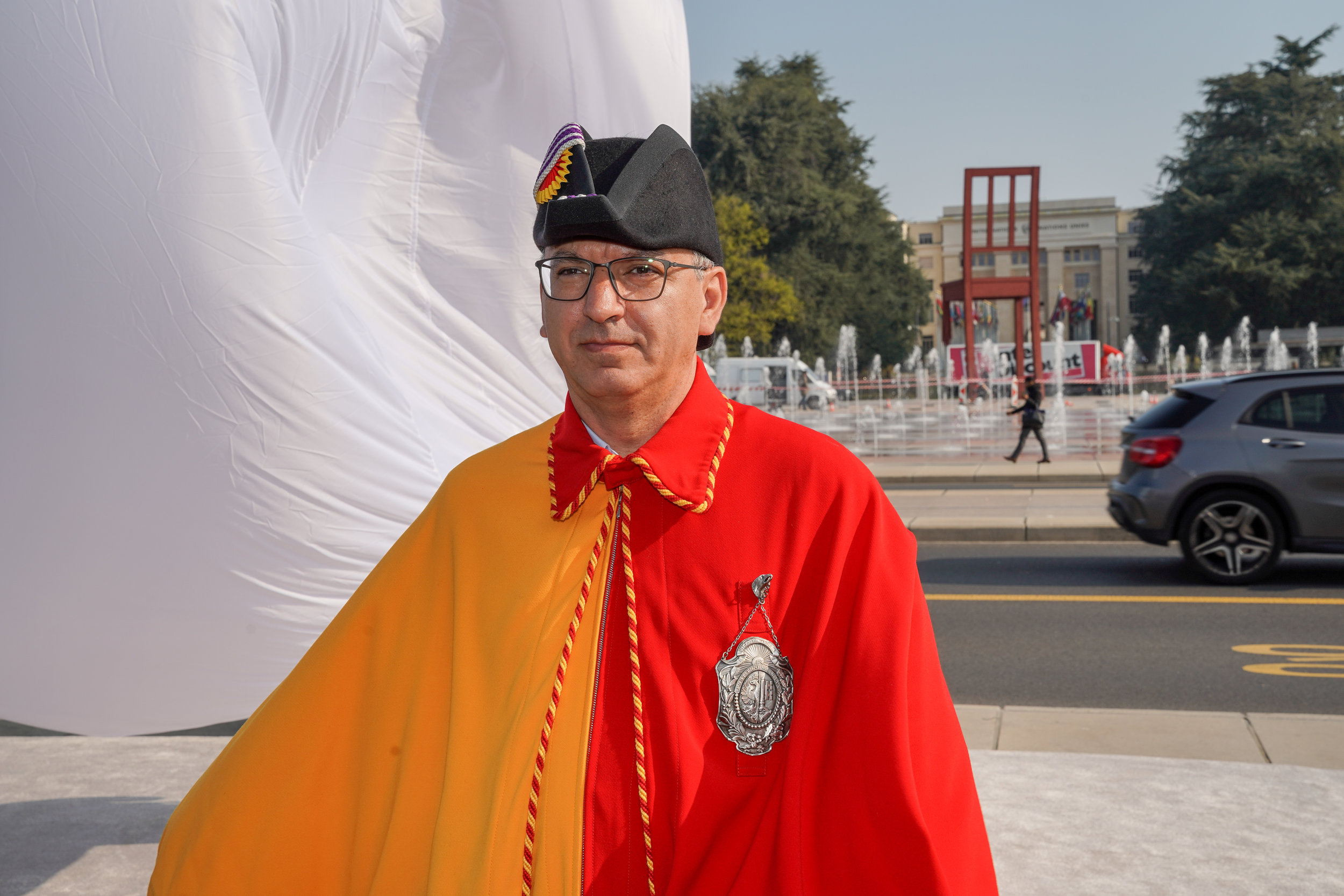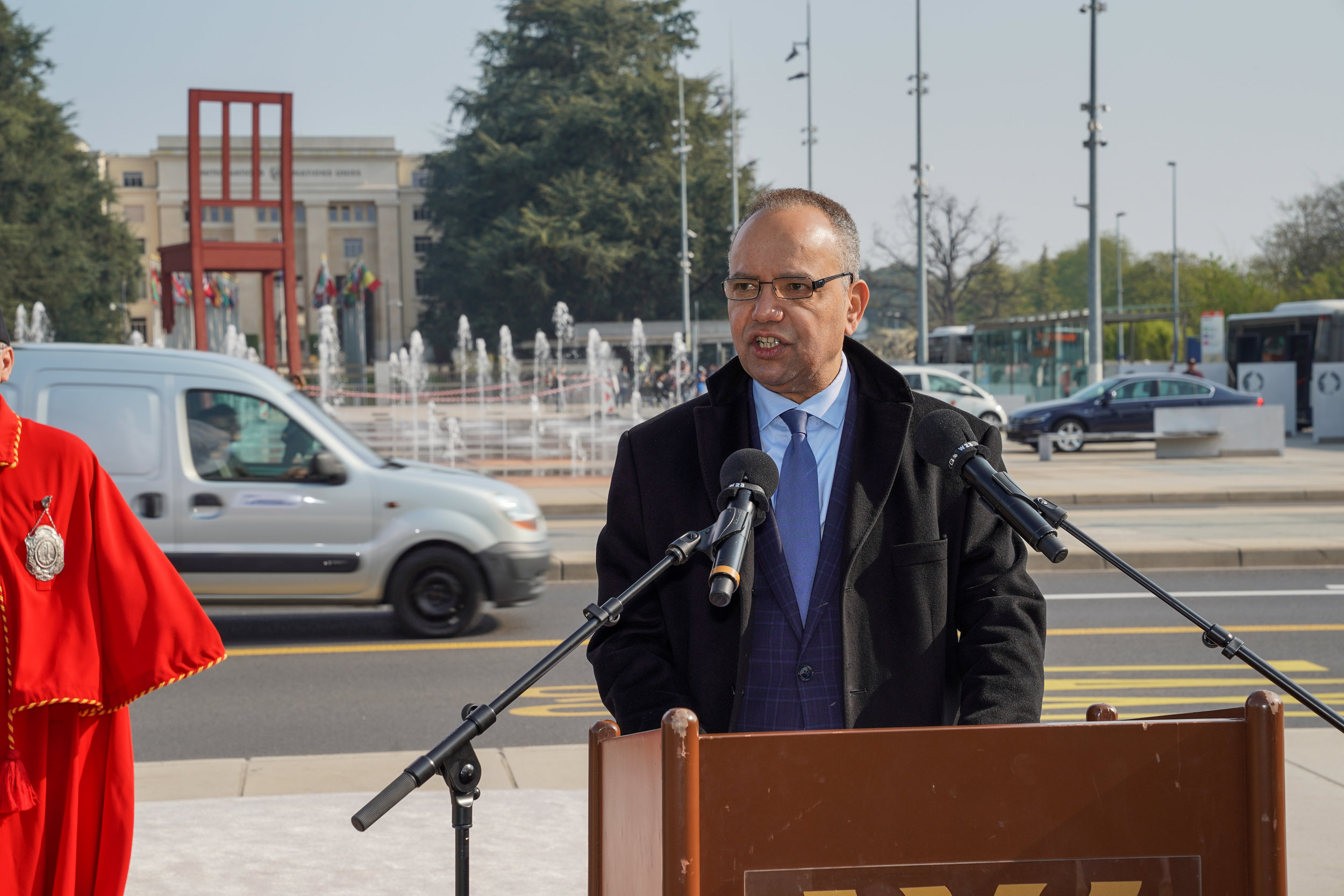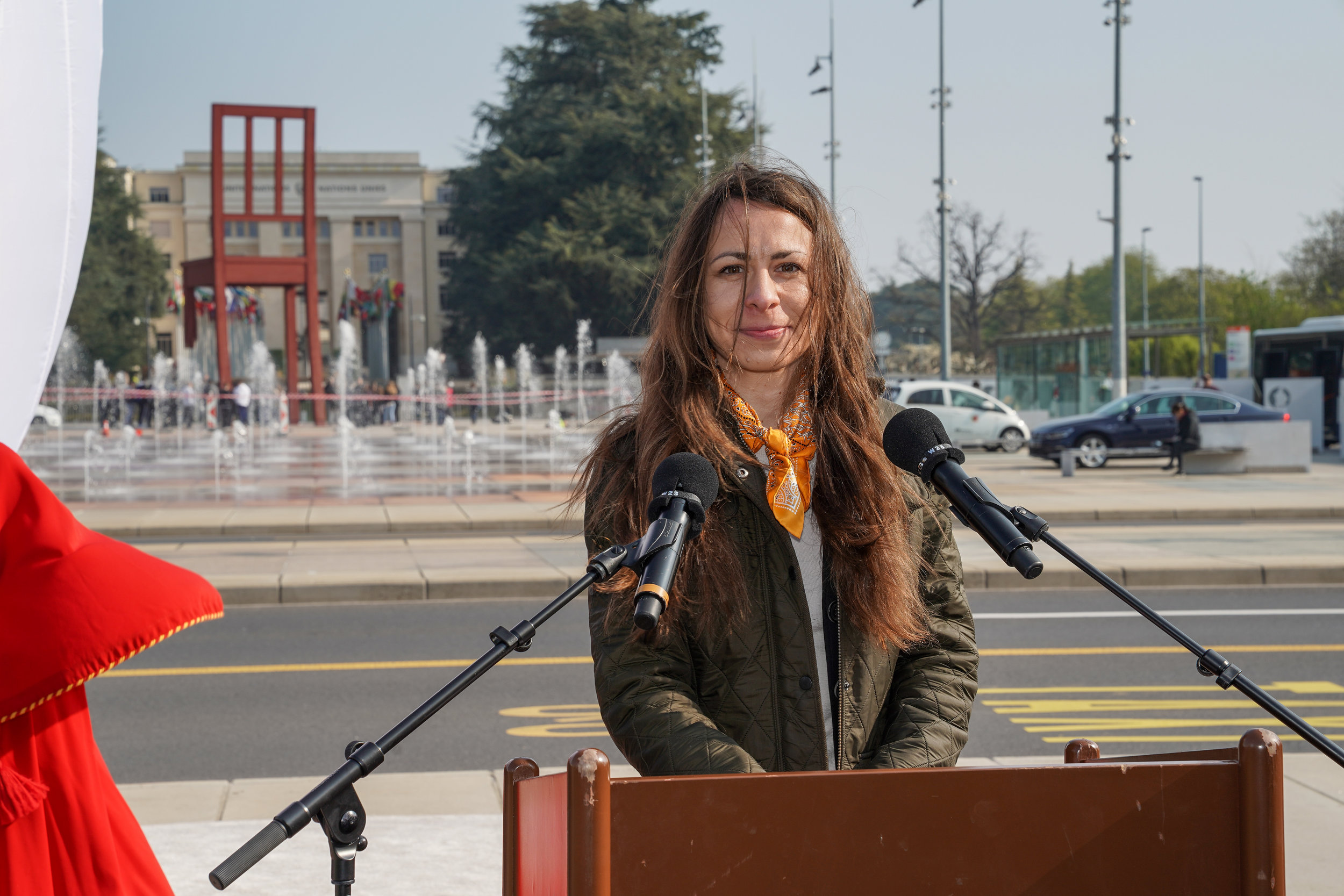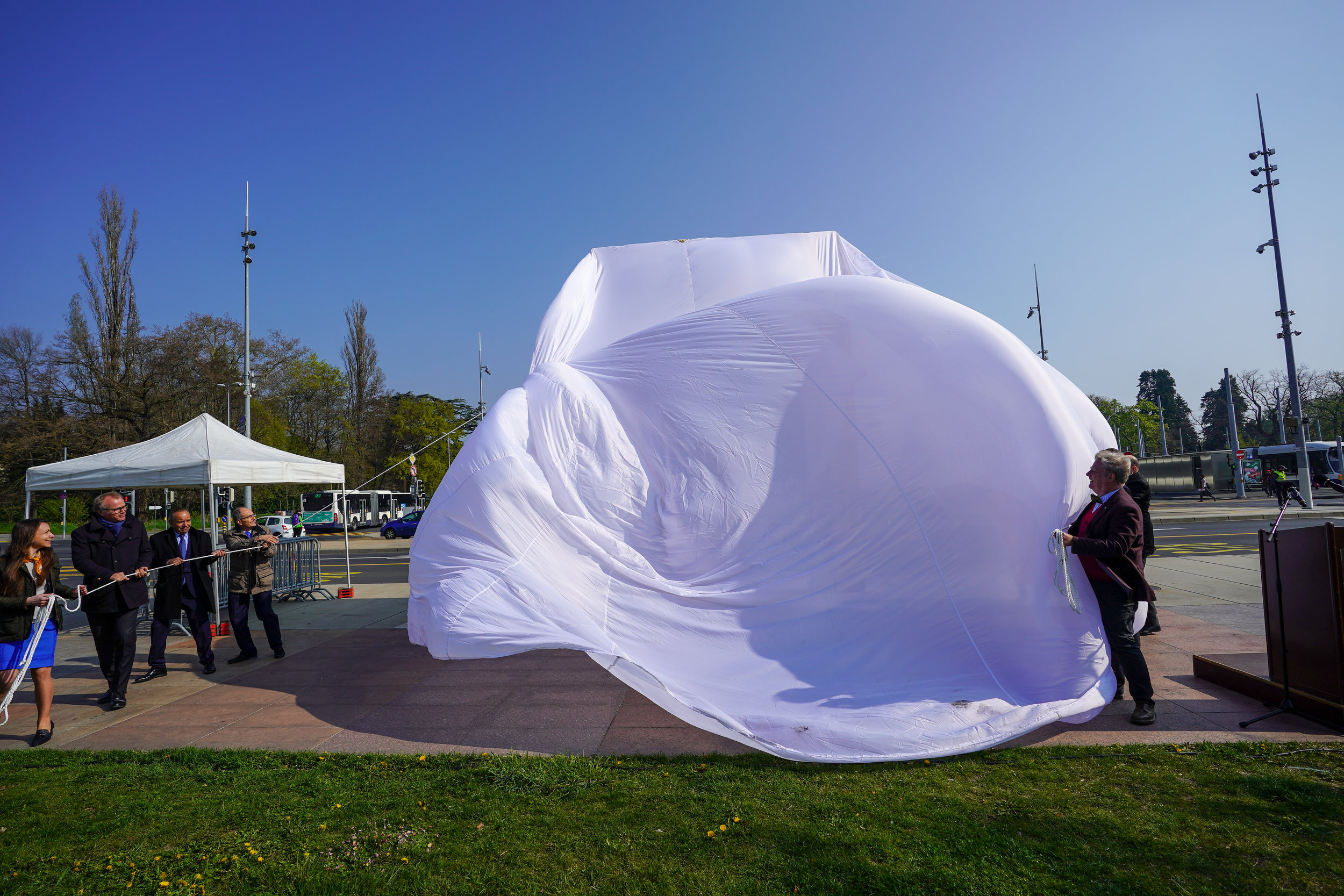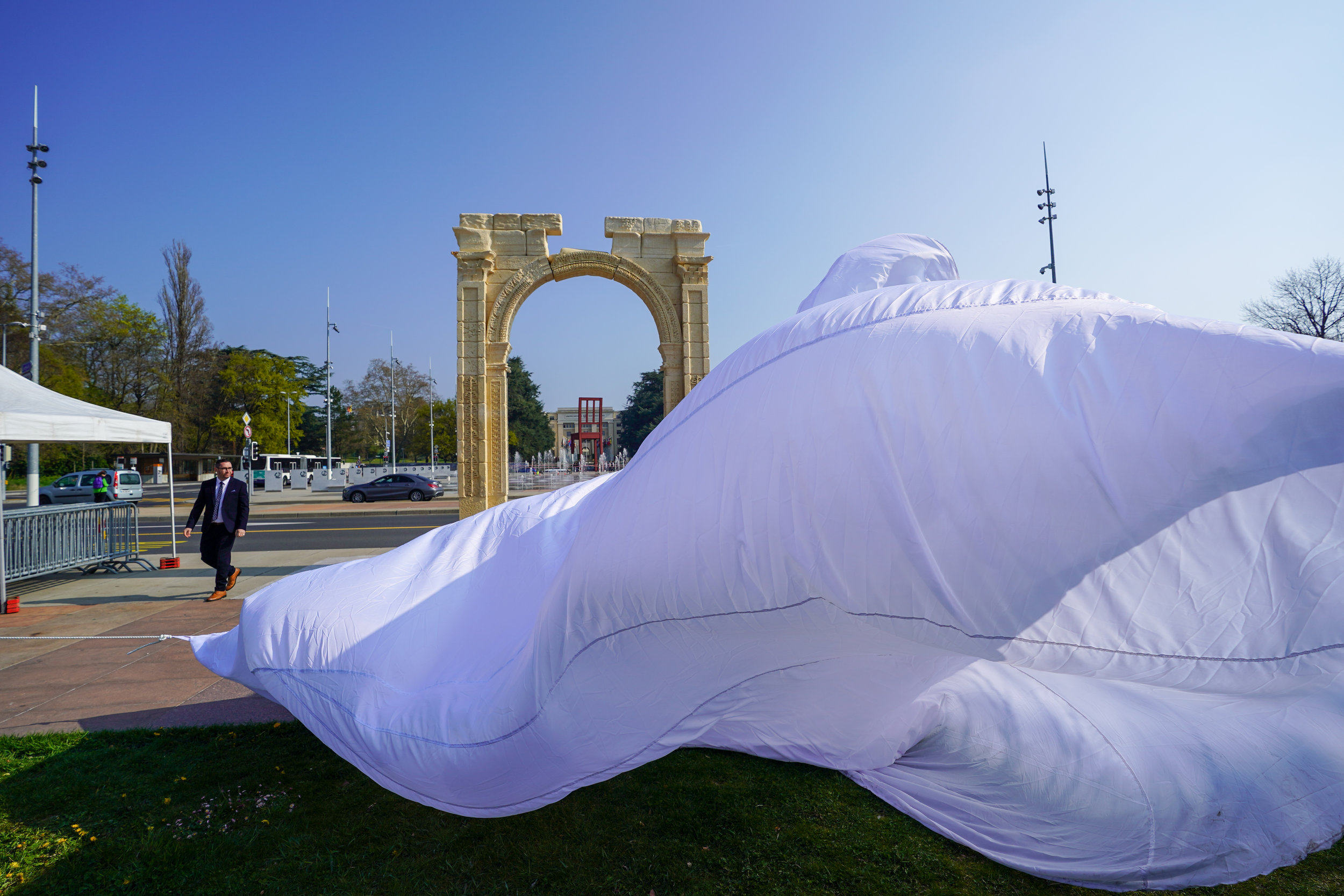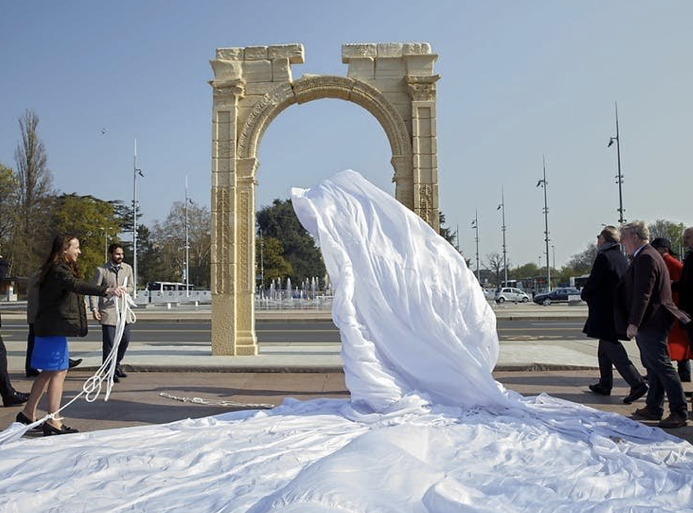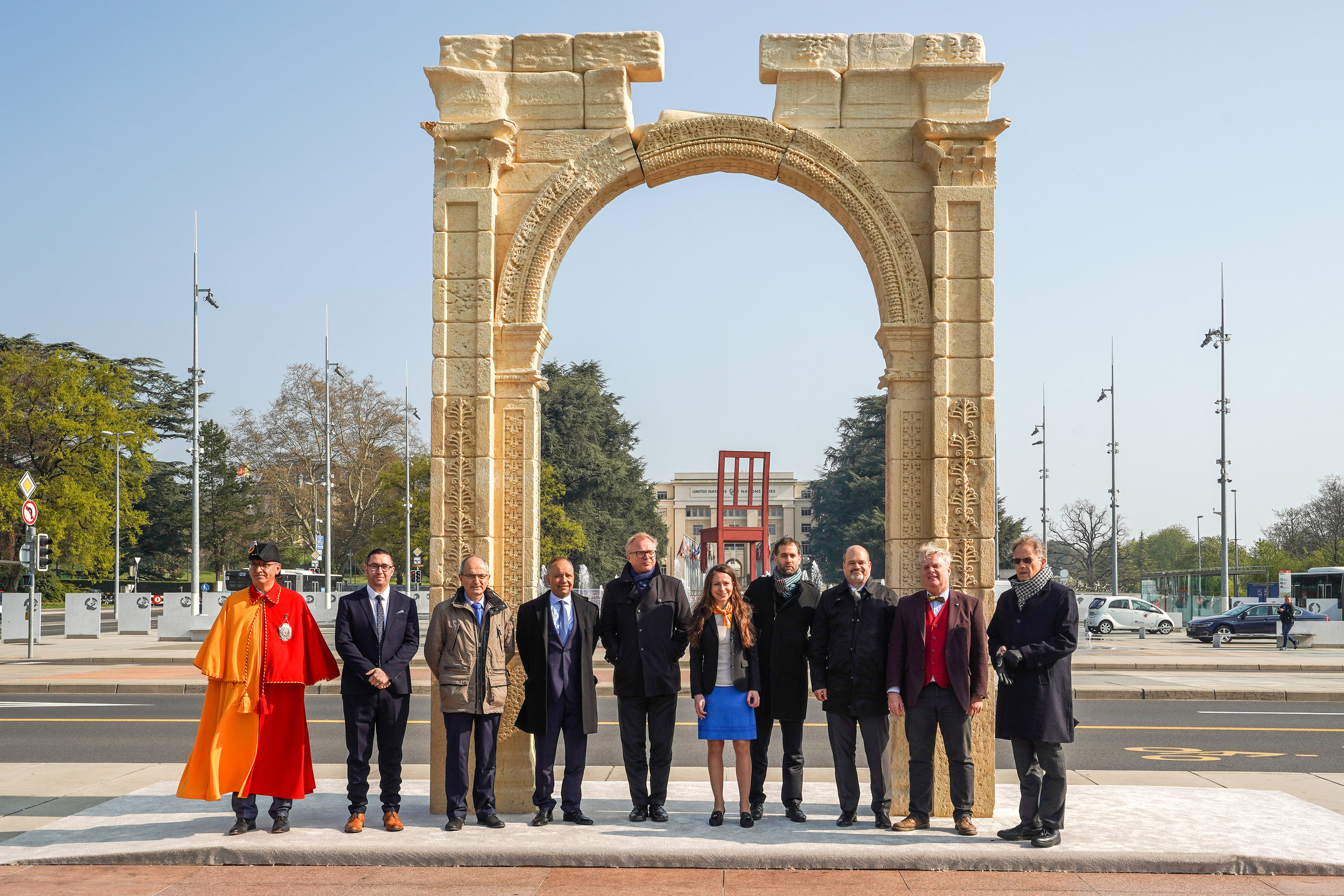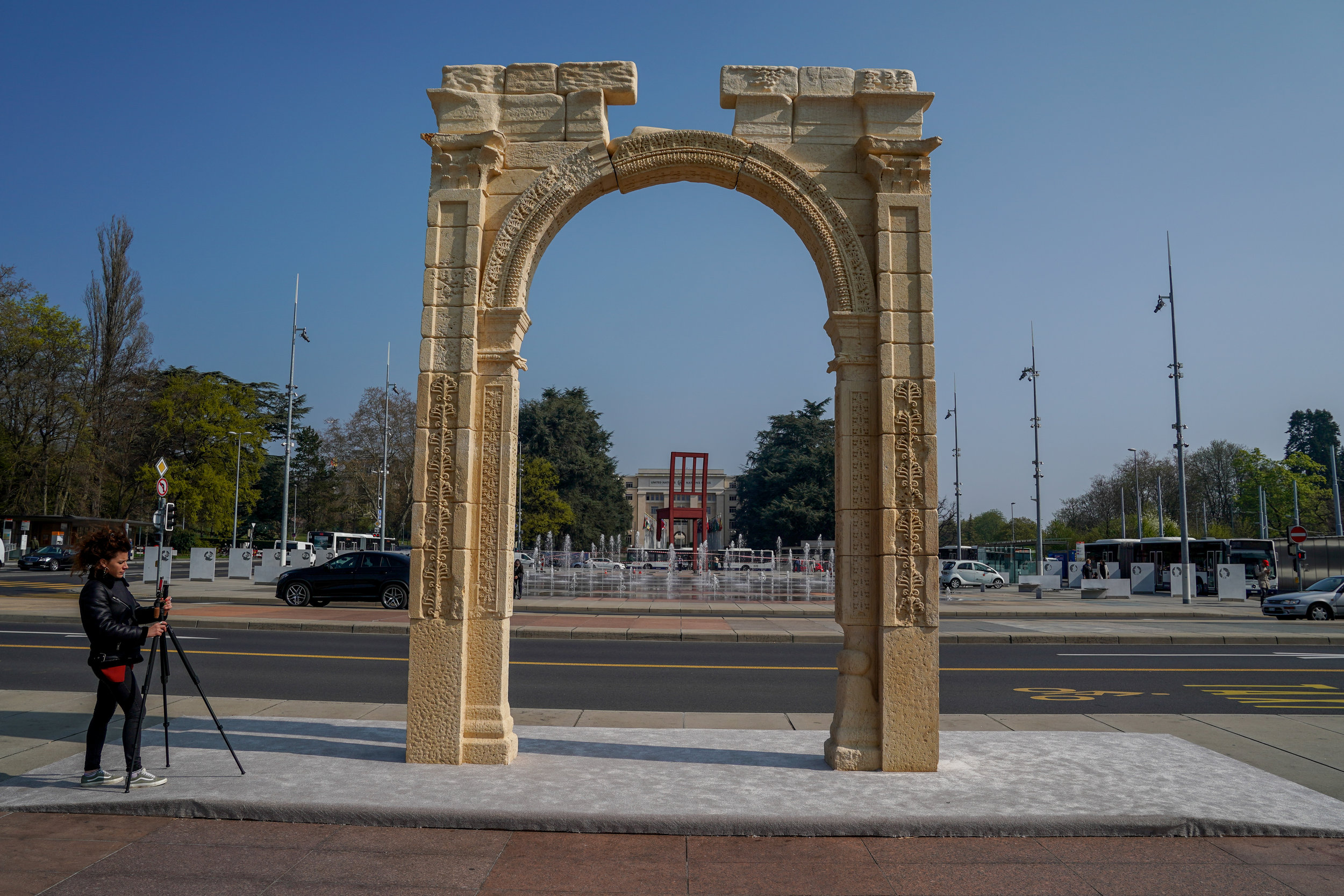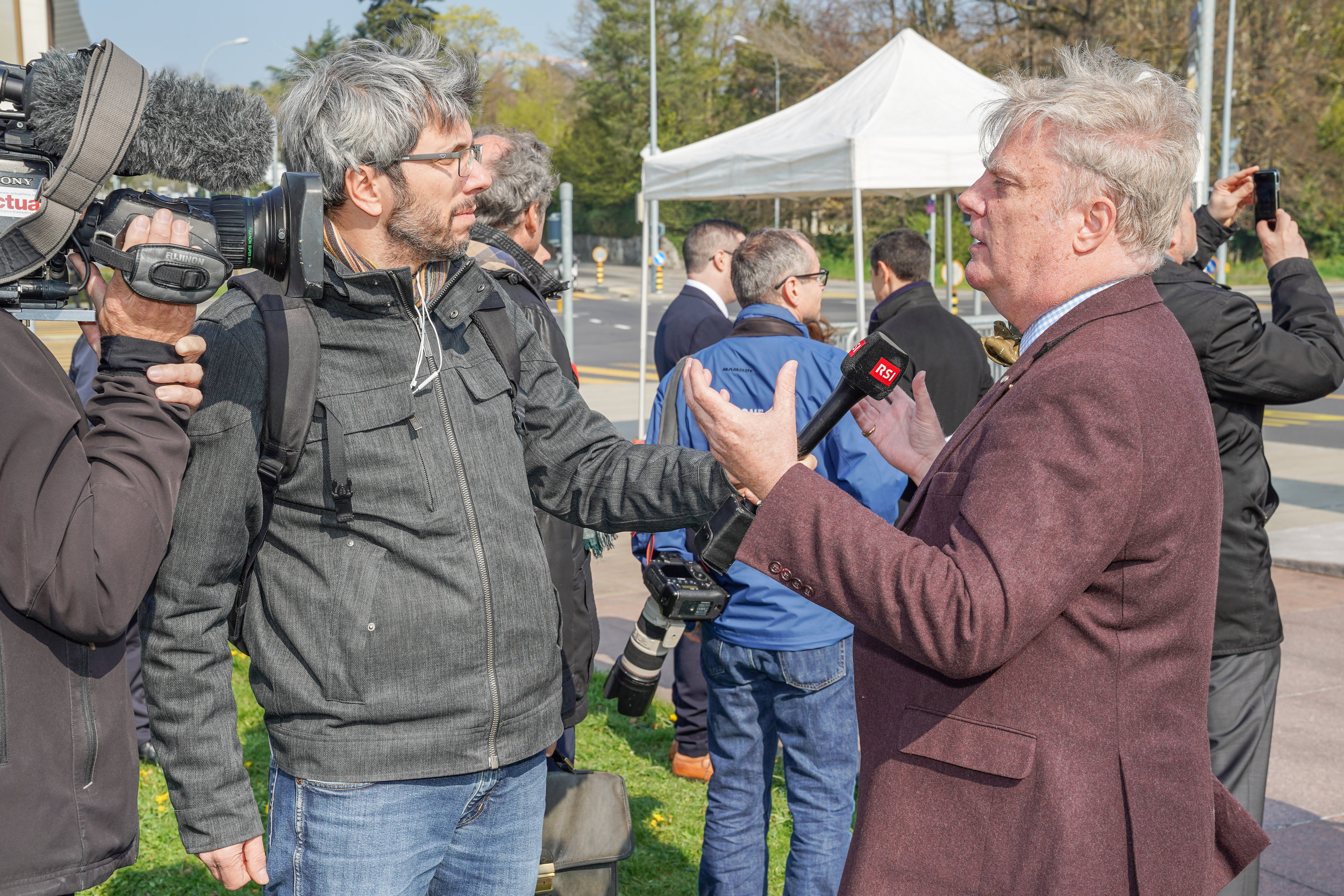Place des Nations, Geneva, Switzerland
Commemorating 20 years of the Second Protocol to the Hague Convention
April 12 - 27, 2019
Read about the April 25 Closing Ceremony on Ville de Genève’s website
Read about the April 12 unveiling in Le Temps, Radio LAC, Le Nouvelliste, RTS CH, Tribune de Genève, ARC Info and 20 Minutes.
Protecting Humanity’s Fragile Heritage
#ArchinGeneva
Protéger le Patrimoine de l’Humanité
#ArchinGeneva
Read more about the Second Protocol (1999) to the 1954 Hague Convention HERE.
By the 2nd century AD, Palmyra, a caravan city built on an oasis in Syria’s Tadmur desert, was a flourishing stopping-place on the main trade causeway between East and West. It was also a place of extraordinary multi-cultural prosperity.
Linked to the historical foundations of modern near-eastern and western civilization, Palmyra is a tangible representation of value systems, beliefs, traditions and lifestyles. Considered to be of outstanding universal value to humanity, it was inscribed on the UNESCO World Heritage List in 1980.
In 2015, many important structures in Palmyra were destroyed by the group calling themselves Islamic State. At that time, the Institute for Digital Archaeology was in the early stages of a cultural heritage protection project in collaboration with colleagues in the region. Plans were made to create a large-scale replica of one of the site’s most important monuments —Palmyra’s Triumphal Arch — using a combination of computer-based 3D rendering and pioneering 3D carving technology. The goal was to use the structure to send a message of peace and to draw attention to the need to preserve irreplaceable tangible and intangible cultural heritage.
Since its unveiling on London’s Trafalgar Square in April 2016, the Arch has been on public display around the world. The structure is a symbol of the triumph of cooperation over conflict, optimism over despair, and human ingenuity over senseless destruction.
On 25th and 26th April, with the support of the Government of Switzerland, UNESCO is organising one of the most important conferences of 2019 on the subject of cultural heritage protection, “Protecting Cultural Property: International Conference on the 20th Anniversary of the 1999 Second Protocol to the 1954 Hague Convention”.
The 1954 Hague Convention was adopted following the immense destruction of cultural heritage resulting from the Second World War and was the first international treaty to focus exclusively on the protection of culture in the event of armed conflict. The 1999 amendment to the Convention represents a key landmark in international humanitarian and cultural protection policy and the beginning of a new era of enhanced administrative, legal, and military protection for world culture. The Second Protocol created a new category of enhanced protection for cultural heritage and established an intergovernmental committee to oversee its implementation.
A first-of-its-kind meeting, the UNESCO conference will bring together State representatives, stakeholders, and international experts to reflect on the achievements of the Second Protocol to the 1954 Convention — a key landmark in international humanitarian and cultural protection policy.
Switzerland and Geneva are proud to underline their commitment to peacebuilding and cultural protection through the support of these initiatives.
CLICK HERE to read more about the History of the Triumphal Arch of Palmyra!
Au IIe siècle de notre ère, Palmyre, une cité caravanière du désert de Tadmur en Syrie, était une étape incontournable sur la principale voie commerciale entre l’Est et l’Ouest, au carrefour de plusieurs civilisations.
Liée aux fondements historiques de la civilisation moderne du Proche-Orient et de l’Occident, Palmyre incarne les différents systèmes de valeurs, de croyances et de modes de vie des cultures qui la composent. Reconnue pour sa valeur universelle exceptionnelle pour l’humanité, le site a été inscrit sur la liste du patrimoine mondial de l’UNESCO en 1980.
En 2015, de nombreuses structures importantes à Palmyre ont été détruites par le groupe s’appelant Etat islamique. À cette époque, l’Institut d’archéologie numérique avait initié un projet de protection du patrimoine culturel en collaboration avec d’autres experts de la région. Il était prévu de créer une réplique à grande échelle de l’un des monuments les plus importants du site, l’Arc de Triomphe de Palmyre, grâce à la technologie 3D. L’objectif était d’utiliser la structure pour envoyer un message de paix et d’attirer l’attention sur la nécessité de préserver le patrimoine matériel et immatériel.
Depuis son inauguration sur Trafalgar Square à Londres en avril 2016, l’Arc a été exposé au public dans différentes villes de par le monde. La structure promeut et rappelle le triomphe de la coopération sur les conflits, de l'optimisme sur le désespoir et de l'ingéniosité humaine face à une destruction insensée.
Les 25 et 26 avril, avec le soutien du gouvernement suisse, l'UNESCO organise l'une des plus importantes conférences de 2019 sur le thème de la protection du patrimoine culturel, intitulée « Protéger les biens culturels : Conférence internationale du vingtième anniversaire du deuxième protocole de 1999 à la Convention de La Haye de 1954 ».
La Convention de La Haye de 1954 a été adoptée suite à l’immense destruction qu’a subie le patrimoine culturel lors de la Seconde Guerre mondiale et a été le premier traité international consacré exclusivement à la protection de la culture en cas de conflit armé. L’amendement de 1999 de la Convention représente un tournant dans la politique internationale de protection culturelle et humanitaire et marque le début d’une nouvelle ère de renforcement de la protection administrative, juridique et militaire de la culture mondiale. Le Deuxième Protocole a créé une nouvelle catégorie de protection renforcée du patrimoine culturel et a formé un comité intergouvernemental chargé de superviser sa mise en œuvre.
Première réunion de ce type, la conférence de l'UNESCO réunira des représentant-e-s d'États, des parties prenantes et des experts internationaux pour traiter de la promotion du Deuxième Protocole à la Convention de La Haye de 1954, une étape importante dans la politique internationale de protection culturelle et humanitaire.
La Suisse et Genève sont fières de s’engager en faveur de la consolidation de la paix et de la protection du patrimoine culturel en danger à travers ce type d’initiatives.
